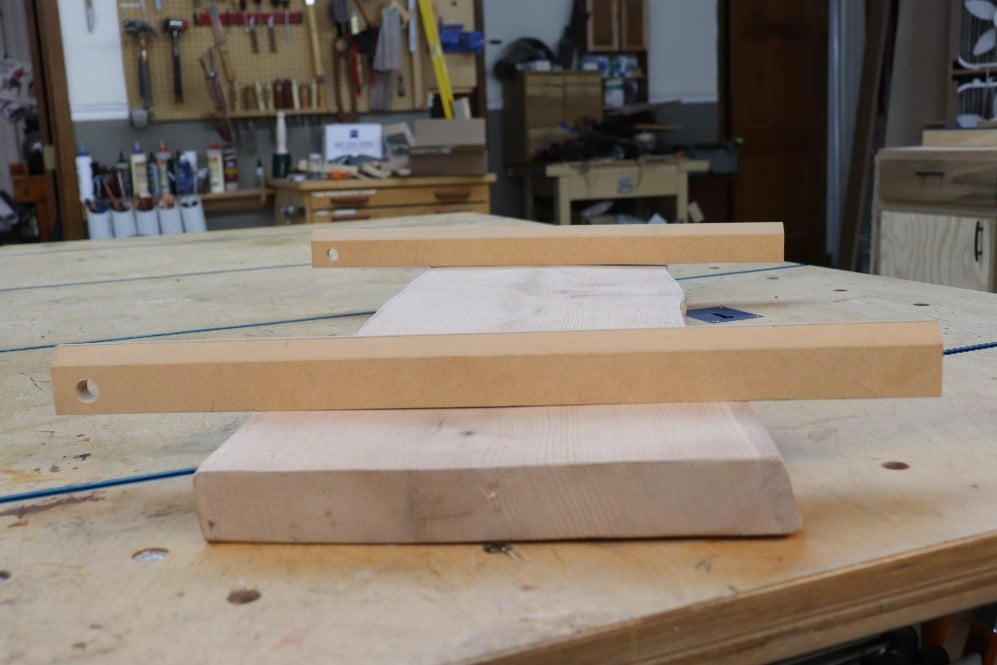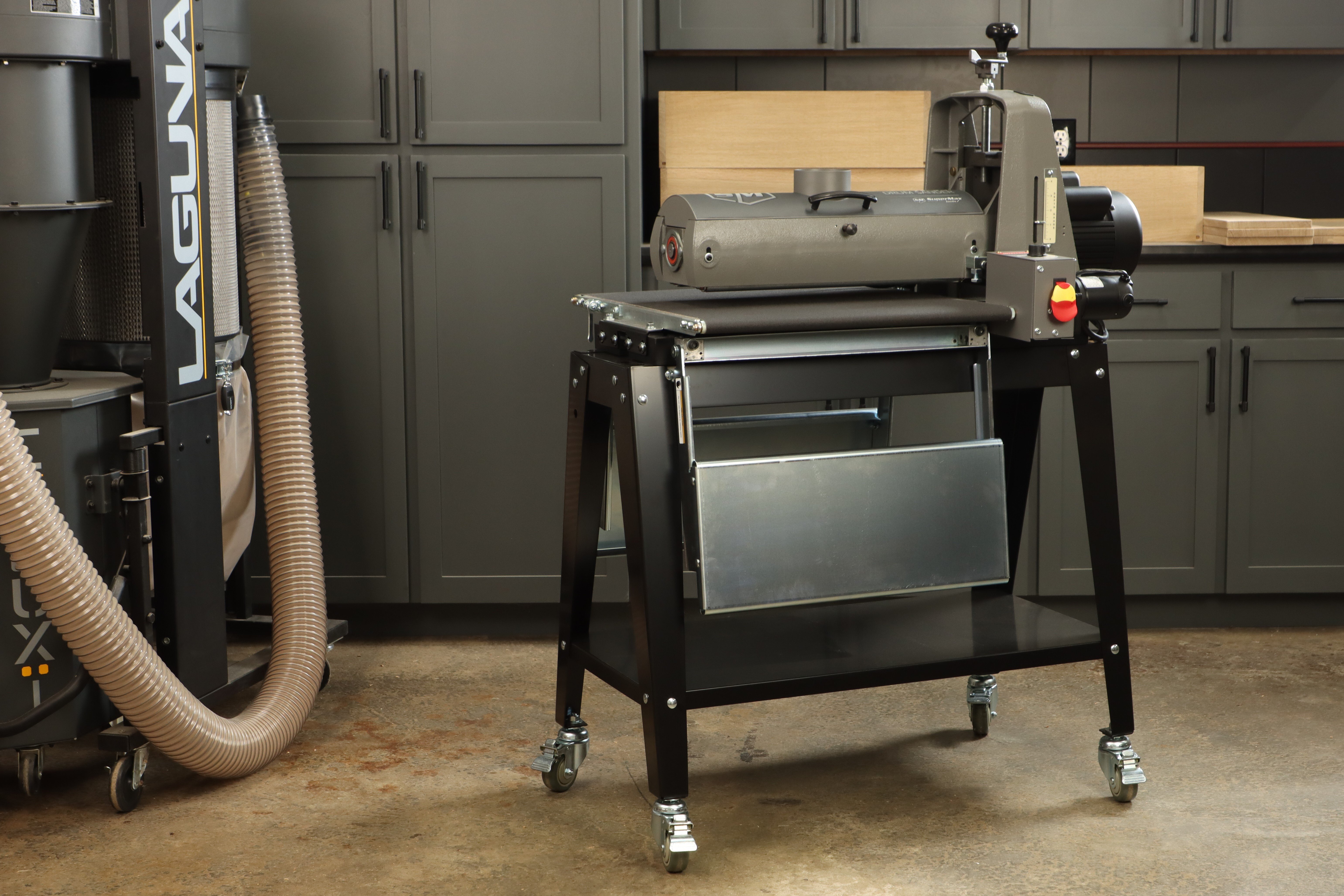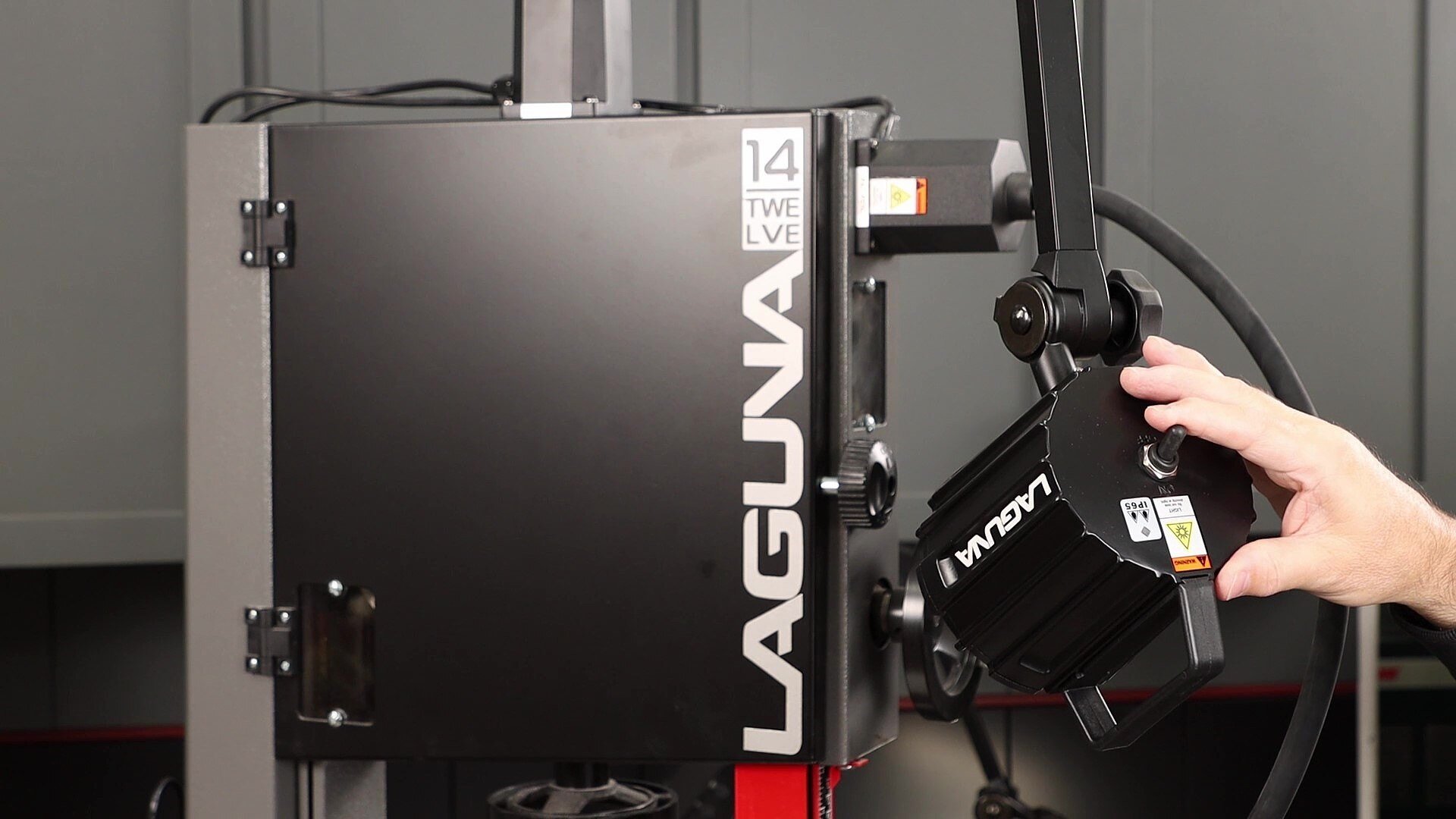When pieces are too big to be face jointed, but need to be flattened, winding sticks are a huge problem solver. This low-tech device, used in conjunction with a power plane, hand plane or belt sander, will help you find and eliminate high spots and twist.
It generally doesn’t pay to try and flatten twisted boards by sending them through a planer. In most cases the planer will make them smooth, but won’t remove the twist. You CAN use your planer after you’ve made one face flat.

Make your winding sticks from a stable material. These are made from 3/4" x 2” MDF strips. If the sticks don’t remain flat and true, they’ll be no good to you. Put a 45-degree chamfer on one edge, leaving a 1/4" wide flat on the edge. It’s easier to accurately sight over the sticks when the edge approaches a knife edge, instead of being left square. 24” long sticks work for me. Make them as long as necessary to span the boards you’ll be using them on. If you’d rather buy them than make them, commercially-made winding sticks are available.

Place your winding sticks on the board and get on eye level with the top edge of the sticks.

Sight over the sticks, paying attention to the knife edges on the top of the sticks. If the edges are out of parallel, like these, you have twists and high spots. Move the sticks and check the board in various spots.

Remove the sticks and mark the high spots. If the board is rough sawn or a dark material, it’ll probably be easier to use chalk to mark it, instead of a pencil.

Secure your material and work on the high spots. You can use a power plane, as shown here, a hand plane, a belt sander…. Whatever works for you for gently removing material, without digging in. It’s important to take light passes and check your work frequently so you don’t turn the high spots into low spots. Stop often, put the winding sticks back on the board, and sight through them again. Remember to check the board in various locations.

After working on the high spots, reposition the winding sticks on your board and sight over them again, positioning them in various spots. When the top edges of the sticks are parallel, as shown here, you’ve achieved a flat face.
If the board is small enough to fit through your planer, put the flat face down on your planer bed and plane the opposite face until it’s flat and parallel to the first face. Then flip it and use the planer to remove any marks left by the flattening process.




